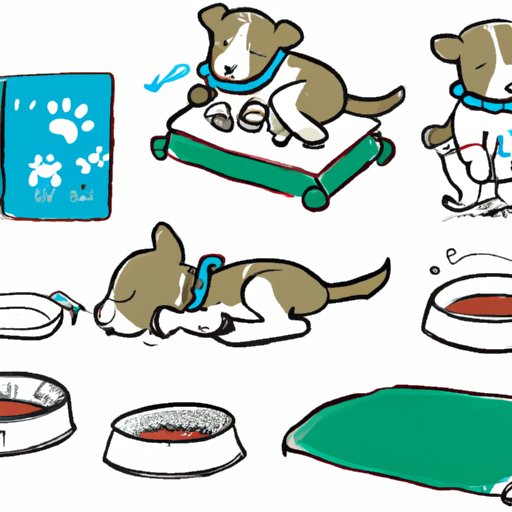
Introduction
Potty training your puppy is not only crucial for maintaining a clean home, but it also helps establish a bond of trust between you and your pup. The process can seem daunting, but with the right approach and patience, it can be a rewarding experience for both of you. In this article, we will cover various methods that have proven successful for pet owners, and help you choose the best approach for you and your puppy.
Step-By-Step Guide Method
Choosing the right spot for potty training is important. Pick a location that is easily accessible and has a good drainage system. Make sure it is away from play areas, feeding areas and sleeping areas. Once you’ve established a spot, it’s time to start training!
The basic training techniques include creating a consistent routine that includes taking your pup outside at regular intervals, right after they eat, play, and wake up from a nap. Puppies need to relieve themselves approximately every two hours. Be sure to reward them when they do so outside.
Positive reinforcement plays a significant role in potty training your puppy. Rewards can include treats, verbal praise, and playtime. When an accident does happen, avoid punishment as it can scare your pup and result in ineffective training. Instead, show no reaction, and simply clean it up.
Accidents happen, but you can avoid them by keeping an eye on your pup at all times and using a crate when necessary. Also, be observant of your puppy’s body language and take them outside when you notice signs of needing to potty, such as sniffing or circling.
Breed-Specific Approach
Breed-specific tendencies can impact the success of potty training. Some breeds like the Cocker Spaniel or Chihuahua may take longer to train than others, so it’s essential to be patient. For instance, smaller breeds have smaller bladders and need to relieve themselves more frequently than larger breeds.
That being said, specific breed potty training solutions can be effective. For example, toy breeds may prefer using an indoor potty pad, while sporting breeds such as retrievers prefer the outdoors. It’s essential to do research on your breed and tailor the training to meet their needs.
Problem-Solving Articles Approach
Common training problems can occur, including refusing to go outside or experiencing anxiety. Refusal to go outside can be an issue for some breeds during inclement weather. In such situations, consider using indoor potty pads or providing shelter for them outside. Anxiety can arise in socialization, separation anxiety or loud noises. Providing comfort, a safe space, or using natural calming remedies can help.
One-Day Seminar Recap Approach
Attending a one-day seminar can be a useful tool for learning the basics of puppy potty training. The main takeaway is to establish a consistent routine, offer positive reinforcement, and be patient. Overcoming challenges takes time and persistence.
Pros and Cons Approach
There is no universal approach to potty training a puppy. Each method comes with its pros and cons. Crate training, for example, offers structure and security, while indoor potty pads may result in accidents in other parts of the home. It’s essential to choose a method that fits your lifestyle and preferences.
Video Tutorial Approach
For those who prefer visual resources instead of written, video tutorials can be helpful. This guide offers practical tips on potty training your puppy in a step-by-step format, with visual aids. Follow the process and perform training tasks with confidence.
Conclusion
Potty training your puppy may seem like a daunting task, but with patience, time, and consistency, you can teach good potty habits that will last a lifetime. By using the approaches outlined in this article, you can create a routine that works for you and your pup. Remember to reward diligent behavior, avoid punishment, and have patience.




